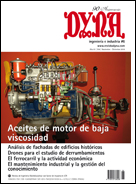APPLICATION OF THE DISCRIMINANT TECHNIQUE FOR STUDYING SPANISH PRODUCERS SMEs TO OBTAIN BINDING MOTIVATED REPORTS ABOUT PROJECTS R&D&I
Keywords:
empresas innovadoras, modelo organizacional, gestión de proyectos de I D i, análisis discriminante, innovative companies, organizational model, project management R&D&I, discriminant analysis.Abstract
Business innovation based on research, development and technological innovation plays a key role as a driver of business competitiveness and socioeconomic growth. Technological innovation studies usually focus on the analysis of expenditures. However bilateral or multilateral relations are not discussed, even though it is known that in the microeconomic field, the relationship between R&D&I and competitiveness reveals complex and not reducible to a simple linear relationship. Numerous quantitative studies related to SMEs that do Research, Technological Development and Technological Innovation (R&D&I) exist, but if a company decides to start innovating, there are no references on structures, organizations, performances, etc. available in companies that already innovate. It has a systematic self-analysis to study the Spanish productive SMEs performing R&D&I, focusing on factors of company projects and mixed, which is based on an interview for SME managers analysis of projects based on Binding Motivated Reports (BMR) and an assessment of the main data presented in the Trade Register. As justified in developing systematic, the analyzed entities have a common characteristic and it is that they have achieved at least one IMV in any of the annualities worked. In order to model the sample of companies and projects there has been several discriminant analysis, which allow to classify a set of cases into different groups from the variables that make up the models obtained. Keywords: innovative companies, organizational model, project management R&D&I, discriminant analysis.Downloads
Published
2016-11-01
Issue
Section
ARTICULOS

